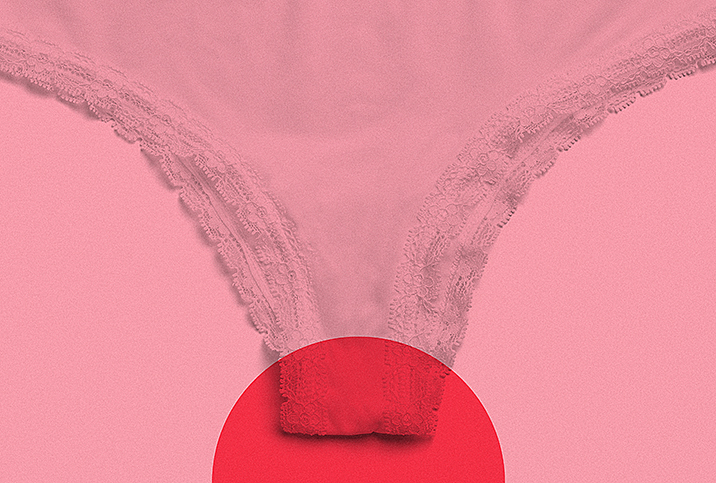Premenstrual Syndrome: Symptoms, Diagnosis, Treatment

“You’re being irrational/emotional.”
“Why are you crying at this toothpaste commercial?”
“Yeah, now that you mention it, you are looking a little bloated.”
If you have a menstrual cycle, or know someone who does, you are probably familiar with these or similar comments. Such remarks minimize premenstrual syndrome (PMS) sufferers and blame menstruating females for reacting to PMS’s very real symptoms.
PMS refers to a collection of distressing symptoms associated with hormonal changes that can lead to difficulties in day-to-day functioning and a low quality of life. Women with PMS often feel cyclical symptoms that can either be psychological (e.g., irritability) or physical (e.g., headaches and back pain). Symptoms may be mild, but five to eight percent of women have moderate to severe symptoms associated with pain or functional impairment that can noticeably disrupt their life each month.
PMS symptoms
PMS typically begins five to seven days before menstruation and generally ends two to four days after menstruation. PMS has various symptoms, but most women experience only some of them. According to recent studies, at least five of the following 11 symptoms, including at least one of the first four listed, should be present:
- Sharply depressed mood, feelings of desperateness or self-deprecating thoughts
- Feelings of being irritated, anxious and tense
- Marked emotional lability (e.g., quick, often exaggerated, mood changes)
- Persistent anger or irritability, increased interpersonal conflicts
- Reduced interest in usual activities, such as work, school, friends and hobbies
- Subjective sense of trouble concentrating
- Easy fatigability, exhaustion, lack of energy
- Apparent change in appetite, including overeating or definite food cravings
- Insomnia or excessive sleepiness during the day (hypersomnia)
- A subjective sense of being overwhelmed or out of control
- Physical symptoms that include headaches, breast sensitivity or swelling, muscle or joint pain, a bloating sensation (feeling full, tight or swollen in the abdomen) or weight gain
PMS's most severe form, with the highest impairment of women's functioning and quality of life, is called late luteal dysphoric disorder (LLDD), or premenstrual dysphoric disorder (PMDD), which may require supervised medical treatment.
Causes and diagnosis
Signs and symptoms of PMS change with hormonal fluctuations in a woman’s body and usually vanish with pregnancy and menopause. Research shows that smoking is associated with PMS, with the risk of PMS rising for women who began smoking in their teen years. Obesity is another risk factor: PMS probability increases significantly in women with a high mean body mass index (BMI).
To help your physician diagnose your symptoms, record symptoms for at least two menstrual cycles, noting the first day of symptoms, as well as when they ease or disappear. A “symptom diary” is essential, because some women who experience PMS cannot fully recall all of the details of symptoms or when and how long they experienced them.
Certain conditions may mimic PMS, such as thyroid disorders and chronic fatigue syndrome, as can mood disorders, such as depression. Your doctor may order tests, including mood screening tests or thyroid function tests, to help establish a clear diagnosis.
PMS treatment and management
Methods of PMS treatment can be divided into two categories: non-pharmacological and pharmacological.
Non-pharmacological methods include lifestyle changes that mainly encompass the big three:
- More exercise
- A balanced diet
- More rest
Eating more vegetables, fruits and whole grains and choosing foods rich in calcium and magnesium, such as dairy products, is recommended; so is reducing or eliminating caffeine and alcohol. Exercise should become routine. Brisk walking, swimming or cycling for at least 30 minutes a day will help improve your overall health and, at the same time, relieve depressed mood, fatigue and other PMS symptoms.
Supplements may alleviate PMS symptoms. Calcium, magnesium, vitamin E and vitamin B6 have all been reported to soothe symptoms. Some women relieve symptoms with herbs, such as ginger, ginkgo, chasteberry (Vitex agnus), evening primrose oil, St. John’s wort and others, but speak to your doctor before taking these, because they might have negative effects on other medications, including birth control pills. Other sufferers turn to acupuncture for relief. The success of any of these methods varies among individuals.
Pharmacological methods include commonly prescribed medications, such as nonsteroidal anti-inflammatory drugs (NSAIDs). Taken before or at the onset of your period, NSAIDs such as ibuprofen (e.g., Advil, Motrin IB) can ease the pain of cramping. Your doctor may also prescribe diuretic medication, which helps the body shed excess water buildup and alleviate bloating.
You may also be prescribed hormonal contraceptives to suppress ovulation, and certain antidepressants, which have been successful in reducing mood-related symptoms. These antidepressants, which are prescribed differently than daily antidepressants, are taken from mid-cycle until the period begins (luteal phase) and can alleviate mood swings and depression. Your physician will likely need to monitor you more closely if these are prescribed.
Getting to the bottom of PMS and getting relief for symptoms is worth the time a woman puts in. The ongoing pain, discomfort and mood swings, despite decades of snide jokes, are no laughing matter.

















